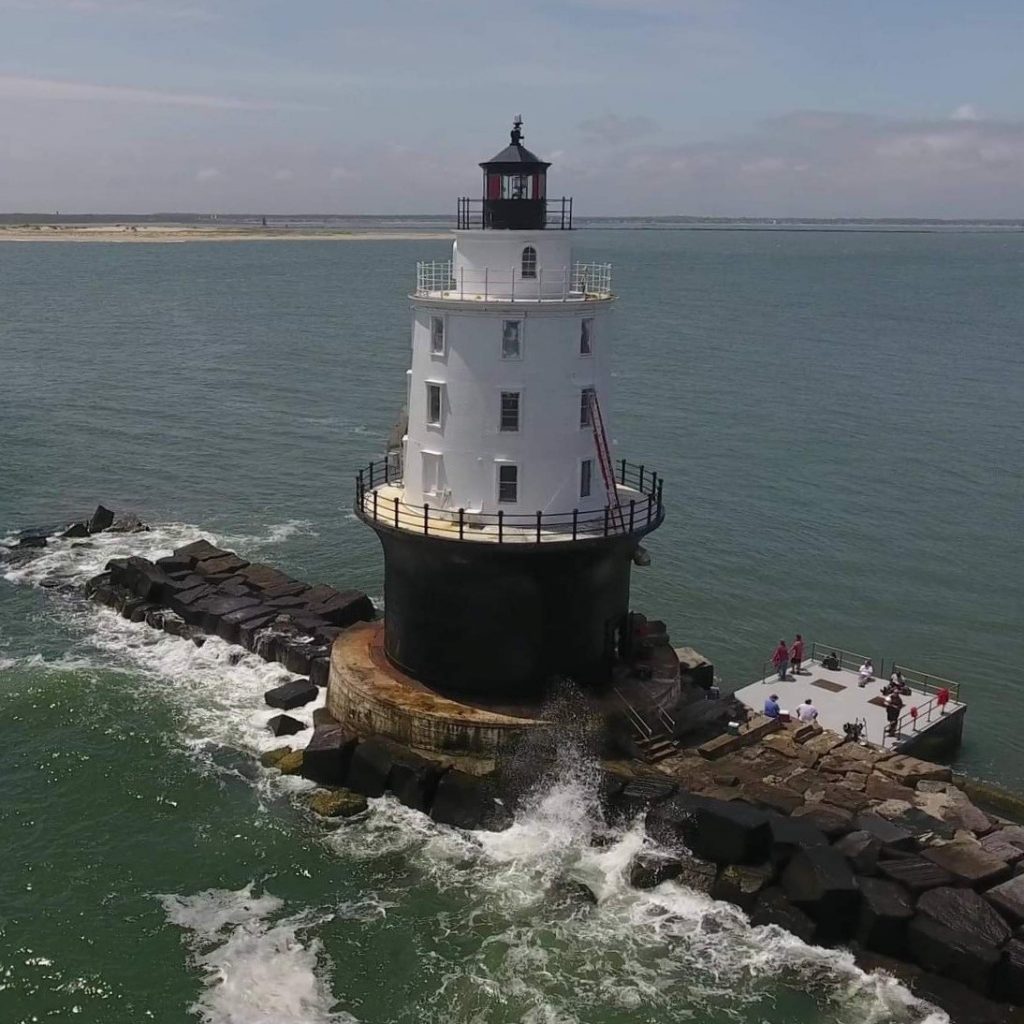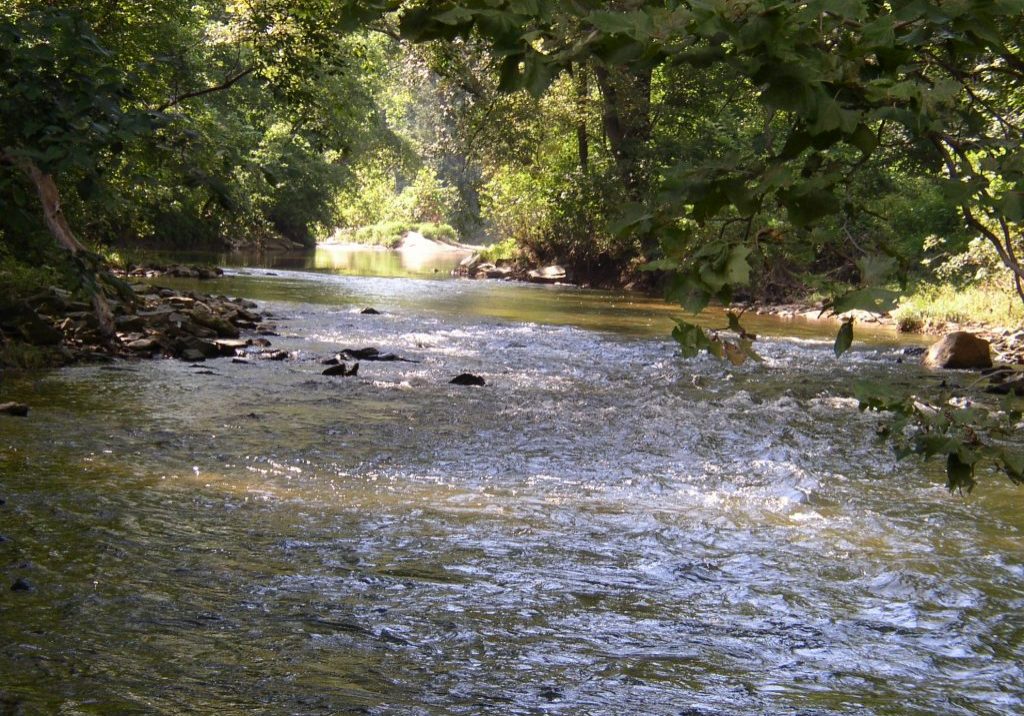
Shoring up the Harbor of Refuge lighthouse
A federal study will explore the breakwater that the Delaware Bay lighthouse is on and recommend fixes
| November 10, 2022
For nearly a century, the Harbor of Refuge Lighthouse off Cape Henlopen, Del., has stood as a sentry for fishing boats, commercial vessels and recreational sailors.
The current version of the lighthouse was built in 1926 at the southern end of the stone Harbor of Refuge Breakwater at the mouth of the Delaware Bay where it opens into the Atlantic Ocean.
But like any other building that is nearly 100 years old – much less one that has for decades withstood a battering of water, wind and waves – the lighthouse is in need of constant upkeep and repairs.

The Delaware River & Bay Lighthouse Foundation, a nonprofit organization of lighthouse enthusiasts and preservationists, took ownership of the cast-iron lighthouse from the federal government 18 years ago.
When volunteers first gained access to the building, they found peeling paint and the lighthouse’s former DCB-36 aerobeacon, installed in 1945, in a corner, disassembled. The U.S. Coast Guard discontinued staffing the lighthouse in 1973. The lighthouse, which is automated, now has an VRB-25-LED light powered by solar panels that’s activated at dusk and puts out a 10-second rotating beacon.
For proof of how rough it can be on the breakwater, look no further than the 13 wooden docks that volunteers built over seven years, each of which was damaged beyond repair. The group eventually secured a $781,000 grant to build a concrete structure.
Volunteers have also faithfully repainted the white lighthouse’s exterior multiple times, run tours to the site and continued work restoring the tongue-and-groove woodwork that makes up the interior of the 76-foot-tall tower.
“It’s one of these projects where you’re never done,” said William “Red” Moulinier, preservation coordinator with the foundation.

But even with all the love and attention that volunteers have dedicated to the lighthouse, it still faces a potential structural integrity issue about its foundation, which rests on the breakwater.
Like other breakwaters, the stone one at the Harbor of Refuge is an offshore structure that “breaks” the action of waves, reduces their energy as they reach the beach and provides a safe harbor for ships seeking refuge during storms.
Erosion and scouring take their toll
Construction on the 8,000-foot-long Harbor of Refuge breakwater was completed in 1901 at a cost of about $2.2 million, or roughly $66 million in today’s dollars. It is one of two off Cape Henlopen.
The other, the Delaware Breakwater, was built over 40 years starting in 1829. More than 835,000 tons of stone, including pieces weighing up to six tons, were quarried near the Hudson and Brandywine Rivers and shipped to Lewes, Del. When completed, it was more than 2,500 feet long and 160 feet wide.
Read more: How will the infrastructure bill benefit the Delaware River watershed?
But storms, tidal cycles and scouring have all taken their toll on the Harbor of Refuge breakwater, causing some of its huge stones to be dislodged.
In 2011, the U.S. Army Corps of Engineers replaced 91 immense stones at a cost of $2.62 million. The stones, each weighing about 10 tons, were quarried in Pennsylvania, barged to the site and put in by a crane, according to the corps. Only 11 years later, the breakwater is again in need of repairs after experiencing significant deterioration and damage from several storms, including Hurricane Jose in 2017, the corps said.
Many stones are missing from the breakwater and from around the cement collar of the lighthouse, Moulinier said, adding, “That’s what we’re concerned about.” How much erosion has taken place beneath the foundation is unknown, he said.
The Army Corps, through the federal infrastructure bill, has been allocated $250,000 to study potential repairs to the Harbor of Refuge breakwater.
But, as Daniel J. Kelly, operations project manager at the U.S. Army Corps of Engineers Philadelphia District, noted in an email, “To be clear, the funding we received was to complete a maintenance report for the breakwater (rock structure) upon which the lighthouse sits, not the lighthouse itself.”
“The team preparing the report does fully appreciate the historical significance and usefulness of the lighthouse in conjunction with the breakwater for the maritime community,” he added. The lighthouse is on the National Register of Historic Places.

By the end of the year, the corps expects to finish a draft report, which will outline repair options, the challenges involved and rough cost estimates, Kelly said.
“The end of the breakwater where the lighthouse sits has undergone severe erosion of sand around its base,” he wrote, adding that when the Harbor of Refuge breakwater was built more than 100 years ago in 50 feet of water but “strong storm and tidal currents between the structure and the ever-growing Cape Henlopen have led to water depths over 130 feet.”
The allure of lighthouses
The Harbor of Refuge lighthouse, which has been featured on a U.S. Postal Service “forever” stamp, is one of five working lighthouses in the Delaware Bay, according to the U.S. Coast Guard. The others are: Miah Maull and Fourteen Foot Bank Lighthouses in Cumberland County, N.J.; Brandywine Shoal Lighthouse in Cape May County, N.J.; and Ship John Shoal Lighthouse, near Bombay Hook National Wildlife Refuge in Kent County, Del. Like the Harbor of Refuge lighthouse, these other lighthouses are owned by other entities but the Coast Guard maintains the lights.
At 96 years old, the Harbor of Refuge lighthouse is a youngster compared to many other lighthouses, which were built in the 1800s, said James Hyland, president of the Lighthouse Preservation Society.

At their peak, there were 1,200 lighthouses across the country. Of that figure, 800 remain and only half of those are still in operation, with the other half abandoned, he said.
The tradition of lighthouses dates back to the 9th Act of the first Congress, which was known as the first Public Works Act, in 1789. That marked the start of federal control and maintenance of a network of lighthouses across the country.
The authority over lighthouses changed hands over the centuries, culminating with the Coast Guard. Lighthouses under the guard’s watch have a proud past, including stories of white-gloved inspectors who would visit to ensure they were being properly maintained, Hyland said.
In the 1980s, though, the Coast Guard, facing funding restrictions, began to shed its lighthouses and automate others. Hyland, who conducted an inventory of lighthouses in New England in 1982, said he found that the Coast Guard had maintained the buildings in “exemplary ways” but that with the advent of technological advancements, such as GPS, the need for staffed lighthouses faded.
Some lighthouses have been celebrated for their histories and others for their unique signatures based on the timing of their flashes or the sounding of their foghorns. For instance, Minot’s Ledge Lighthouse in Massachusetts came to be known as the lovers’ lighthouse for its with 1-4-3 lighting signature, which is the same numerical count as the letters of the words “I love you.”
Fundamentally, though, Hyland said, people are drawn to lighthouses because we’re drawn to the light. Centuries ago, before there was technology or detailed charts of shoals and reefs, sailors prayed for safe passage at night and lighthouses became “beams of hope,” he said. “It’s endearing that these buildings were used to save people, and so why shouldn’t we be saving them?” he said








We use this lighthouse on our banner at Atlantic Coast Baptist College in Laurel, Delaware. I was wondering if I could get permission to use the picture at the top of your page on a label on the front of our information packet envelope. Thank you for taking the time to read and consider.